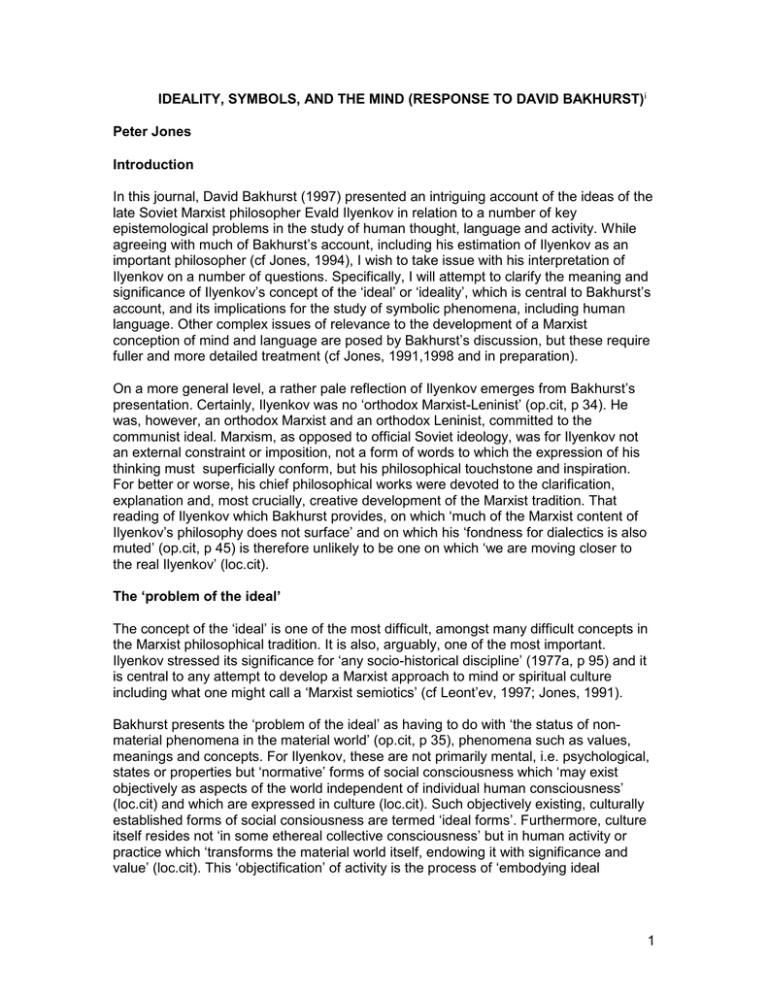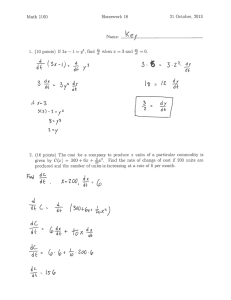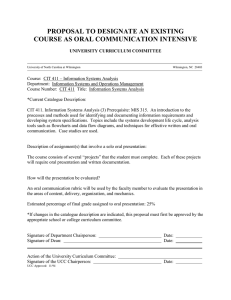In this journal, David Bakhurst (1997) presented an intriguing account... late Soviet Marxist philosopher Evald Ilyenkov in relation to a... IDEALITY, SYMBOLS, AND THE MIND (RESPONSE TO DAVID BAKHURST)
advertisement

IDEALITY, SYMBOLS, AND THE MIND (RESPONSE TO DAVID BAKHURST)i Peter Jones Introduction In this journal, David Bakhurst (1997) presented an intriguing account of the ideas of the late Soviet Marxist philosopher Evald Ilyenkov in relation to a number of key epistemological problems in the study of human thought, language and activity. While agreeing with much of Bakhurst’s account, including his estimation of Ilyenkov as an important philosopher (cf Jones, 1994), I wish to take issue with his interpretation of Ilyenkov on a number of questions. Specifically, I will attempt to clarify the meaning and significance of Ilyenkov’s concept of the ‘ideal’ or ‘ideality’, which is central to Bakhurst’s account, and its implications for the study of symbolic phenomena, including human language. Other complex issues of relevance to the development of a Marxist conception of mind and language are posed by Bakhurst’s discussion, but these require fuller and more detailed treatment (cf Jones, 1991,1998 and in preparation). On a more general level, a rather pale reflection of Ilyenkov emerges from Bakhurst’s presentation. Certainly, Ilyenkov was no ‘orthodox Marxist-Leninist’ (op.cit, p 34). He was, however, an orthodox Marxist and an orthodox Leninist, committed to the communist ideal. Marxism, as opposed to official Soviet ideology, was for Ilyenkov not an external constraint or imposition, not a form of words to which the expression of his thinking must superficially conform, but his philosophical touchstone and inspiration. For better or worse, his chief philosophical works were devoted to the clarification, explanation and, most crucially, creative development of the Marxist tradition. That reading of Ilyenkov which Bakhurst provides, on which ‘much of the Marxist content of Ilyenkov’s philosophy does not surface’ and on which his ‘fondness for dialectics is also muted’ (op.cit, p 45) is therefore unlikely to be one on which ‘we are moving closer to the real Ilyenkov’ (loc.cit). The ‘problem of the ideal’ The concept of the ‘ideal’ is one of the most difficult, amongst many difficult concepts in the Marxist philosophical tradition. It is also, arguably, one of the most important. Ilyenkov stressed its significance for ‘any socio-historical discipline’ (1977a, p 95) and it is central to any attempt to develop a Marxist approach to mind or spiritual culture including what one might call a ‘Marxist semiotics’ (cf Leont’ev, 1997; Jones, 1991). Bakhurst presents the ‘problem of the ideal’ as having to do with ‘the status of nonmaterial phenomena in the material world’ (op.cit, p 35), phenomena such as values, meanings and concepts. For Ilyenkov, these are not primarily mental, i.e. psychological, states or properties but ‘normative’ forms of social consciousness which ‘may exist objectively as aspects of the world independent of individual human consciousness’ (loc.cit) and which are expressed in culture (loc.cit). Such objectively existing, culturally established forms of social consiousness are termed ‘ideal forms’. Furthermore, culture itself resides not ‘in some ethereal collective consciousness’ but in human activity or practice which ‘transforms the material world itself, endowing it with significance and value’ (loc.cit). This ‘objectification’ of activity is the process of ‘embodying ideal 1 properties’ in the environment or ‘idealizing’ it (op.cit, p 36), transforming it ‘into one rich with meaning’ (op.cit, p 35). Bakhurst invokes this interpretation of Ilyenkov as a counter to the Cartesian dualist solution to the problem of the relationship between thought and the external world or, in more traditional philosophical language, the identity of thinking and being. The Cartesian view holds that mind and matter are intrinsically quite incommensurable substances that cannot relate to one another directly. Thought, as it were, can know directly only things of thought, conceptual things, and not material things, and each mind ‘can reach out only as far as representations of reality, not directly to reality itself’ (op.cit, p 37). On this view, ‘mind and world are not made for one another’ (loc.cit) although they are brought into correspondence by divine intervention (cf Ilyenkov, 1977a). Ilyenkov, Bakhurst argues, shows how ‘mind and world are made for one another because the world itself contains meaning’ (op.cit, p 38) as a result of human activity. Ilyenkov, like Kant, believes that ‘we have no preconceptual access to reality (op.cit, p 42). However, the idealizing force of activity ‘lends significance to nature, thereby making it something that a mind can entertain’ (op.cit, p 41). This giving of meaning to the world is ‘a precondition of the possibility of commerce with the world that constitutes the manifestation of thought’ (op.cit, p 40). The world ‘is a possible object of thought’ (op.cit, p 43) because it has been ‘“idealized”, by human agency’ (op.cit, p 36) and is therefore ‘laden with conceptual significance prior to its apprehension by the individual mind’ (op.cit, p 43). Thus, the dualism of mind and material world is overcome since mind is already present in the substance of the world. Mind can know wordly things since those things are already mind-ful; to know a thing is to know it as a thing of meaning, as an ‘ideal form’. Natural objects, then, ‘speak to us in so far as they are incorporated into this domain of meaning’ (op.cit, p 36). The cost of such a view is that mind now confronts not the world of nature as such, but the ‘humanized environment’ comprised by ‘culturally forged ideal forms’ (loc.cit). That is, the mind, in engaging with the ‘humanized environment’ is knowing directly only itself, only the meanings impressed on it by thinking human beings themselves. Bakhurst recognizes that this position merely displaces the crucial philosophical issue of the relationship between mind (ideal forms) and nature independent of and prior to human activity and agency but claims that this is not particularly an issue for Ilyenkov since ‘there is no meaningful philosophical contrast between the world as experience presents it to us and the world as it is’ (op.cit, p 42). I suggest that this epistemological argument is, ironically, essentially an inversion of the Ilyenkovian position. Indeed it very much resembles the Hegelian ‘absolute idealist’ epistemology so thoroughly criticized by Ilyenkov in which: ‘The whole world surrounding the human being - rivers and stars, temples and guillotines, statues and machines - are considered by him [ie Hegel, PEJ] as objectified thinking, as intellect which has come to rest in its products, as ‘petrified’ intellect’ (1974, p 66). The problem stems from a slight misunderstanding by Bakhurst of Ilyenkov’s concept of the ideal. On Bakhurst’s interpretation, the category extends to ‘all objects which are brought into the sphere of “human spiritual culture”, incorporated in whatever way into 2 human ends and purposes’ (op.cit, p 36) thereby embracing the whole of the human world and nature itself in so far as human agency impinges on it. This apparently elegant alternative to Cartesian dualism therefore comes at the expense of the materialist foundation of Ilyenkov’s position. The seeds of this reading of Ilyenkov are sown in Bakhurst’s (1991) initial and very influential exposition of the ideal to which I now turn. Ideality and artifacts Bakhurst (1991, p 181, cf also Bakhurst, 1995, pp 160-161) approaches the concept of the ideal through a discussion of artifacts. The difference between something being an artifact, for example a table, and being a natural object like a lump of wood has to do with human activity: ‘When an artifact is fashioned, human activity is somehow embodied [voploshchennyi] in the natural object’ (1991, p 182). He explains: ‘Ilyenkov does not just mean that, when an artifact is created, some material object is given a new physical form. This is true, but something a naturalscientific account could capture. Rather, in being created as an embodiment of purpose and incorporated into our life activity in a certain way - being manufactured for a reason and put to a certain use - the natural object acquires a significance. This significance is the “ideal form” of the object, a form that includes not a single atom of the tangible physical substance that possesses it...It is this significance that must be grasped by anyone seeking to distinguish tables from pieces of wood’ (loc.cit, his emphasis, also quoted in Cole, 1996, pp 117-118) He continues: ‘Ilyenkov sometimes explains this significance by appeal to the concept representation. A purely natural object takes on significance when it comes to represent something with which its corporeal form has “nothing in common”, a form of human activity...Objects owe their ideality to their incorporation into the aim-oriented life activity of a human community, to their use. The notion of significance is glossed in terms of the concept of representation: Artifacts represent the activity to which they owe their existence as artifacts’ (op.cit, pp 182-183, his emphasis). The proposition that ‘objects owe their ideality to their incorporation into the aim-oriented life activity of a human community’ is, as we shall see below, undoubtedly consistent with Ilyenkov. However, Bakhurst’s account relies on the converse being true, namely that the incorporation of objects into purposive activity in itself bestows ideality on them, or makes them ideal, and it is this further step which I will suggest is invalid. Before we turn to Ilyenkov’s work directly, let us scrutinise Bakhurst’s arguments more closely. The first argument is that a thing is ideal by virtue of the fact that it has been created for a reason or purpose. If this is the case then anything and everything connected with human activity becomes ideal. So not only the instrument of labour, eg the spade I dig with, but the product of labour, the hole I dig, is ideal, since it realises the idea of a hole, or the purpose of digging a hole, that I worked towards. Not only the bakery, but the bread made in the bakery is ideal. The parents’ procreative purpose is realised in the 3 child, who thus becomes an ideal person. In his more recent account, Bakhurst (1997) in fact follows this conceptual logic, as we have seen, applying the concept to all objects which have a connection with human activity. While some may be satisified with this outcome, it does not accord with Ilyenkov’s view. The second argument, seeking to ground ideality in the use or function of objects, immediately runs up against a contradiction. The table, for example, as a humanlycreated artifact, certainly functions in a socially determined and accepted way (to eat meals off, to support a fruit bowl, etc) which its wooden nature per se is not responsible for. But this function, pace Bakhurst, actually does include or embrace every single atom of the tangible physical substance ‘possessed’ by the function. The ‘table function’ can only be exercised by a physical table made of physical stuff (eg wood) constructed in such a way as to be physically strong enough to permit that function. The use of the table - its ‘significance’ in Bakhurst’s terms - is, therefore, necessarily connected with and conditioned by its physical properties and, what is more, governed by physical laws (eg gravity) independent of our purposes which a natural-scientific account can precisely capture. It is hardly possible to attribute the functioning of artifacts like tables or tools to non-material properties, a position which is indeed incompatible with Marxism: ‘An instrument of labour is a thing, or complex of things, which the worker interposes between himself and the object of his labour and which serves as a conductor, directing his activity onto that object. He makes use of the mechanical, physical and chemical properties of some substances in order to set them to work on other substances as instruments of his power, and in accordance with his purposes (Marx, Capital Volume 1: 285, my emphasis). The third argument suggests that artifacts ‘represent’ the activity in which they function. But this is not generally the case. The mechanical digger does not represent digging and the power station does not represent the generation of electricity; they do not stand for something else in that process but are simply used (and, indeed, used up) as instruments of the process. This does not preclude the possibility that such artifacts may have an additional symbolic function carried by an insignia or logo or some aspect of their design which serves to identify the manufacturer. In that case one would simply say that a number of logically distinct and mutually exclusive functions intersect simultaneously in the body of the artifact. In short, the approach to ideality through the analysis of useful artifacts like tables or tools poses severe philosophical difficulties and results in genuine logical problems. I suggest this is simply because this interpretation of the concept is much too broad, for reasons discussed in Jones (1998). Others who have been influenced by Bakhurst’s writings on Ilyenkov (eg Cole, 1996; Engestrom, 1996; Wells, 1994, cf Jones, 1998 for full discussion) have also accepted such a wide scope for the term with similarly undesirable consequences. Let us now turn to Ilyenkov’s own account of the term. Ideality and the symbolic The whole Ilyenkovian conception of the ideal is predicated on a particular version of philosophical materialism or ‘reflection theory’. For Ilyenkov, ideality is not the whole of culture but ‘an aspect of culture, one of its dimensions, determining factors, properties’ (Ilyenkov, 1977b, p 96) existing ‘in a variety of forms of man’s social consciousness and 4 will as the subject of the social production of material and spiritual life’ (1977a, p 252). He characterises the ideal as ‘the subjective image of objective reality, i.e. reflection of the external world in the forms of man’s activity, in the forms of his consciousness and will’ (1977b, p 252). Elsewhere, Ilyenkov describes ideal forms as embodying ‘images of human social culture, that is, the historically formed modes of human social life’ (ibid, p 79, his emphasis) which are ‘materially established (objectivised, materialised, reified)’ (loc.cit, his emphasis). That is, they have a material reality (and are ‘hence often identified with it’, loc.cit), but their function in essence derives not from their own materiality per se but in their reflecting, or representing another reality outside themselves and such ‘materialised’ images are, therefore, characteristically symbolic ‘objects’. Thus, when Ilyenkov speaks of ideal forms he is referring purely to ‘things’ which have a representative function or play a role in the symbolic mediation of activity, like money or language, and never to tools, let alone the ‘humanized environment’ as a whole: ‘At first hand, transformation of the material into the ideal consists in the external fact being expressed in language, which is “the immediate actuality of thought” (Marx)’ (1977a, p 262). And elsewhere, he argues: ‘The ideal is immediately realised in a symbol and through a symbol, i.e. through the external, sensuously perceived, visual or audible body of a word. But this body, while remaining itself, proves at the same time to be the being of another body and as such is its “ideal being”, its meaning, which is quite distinct from its bodily form immediately perceived by the ears or eyes’ (1977a, p 266, his emphasis). When he occasionally enumerates some of the phenomena which have such a symbolic function, tools or instruments of practical activity are never included, e.g.: ‘The book, statue, icon, diagram, gold coin, tsar’s crown, banner, the theatrical production and the dramatic theme which gives it structure’ (Ilyenkov, 1991, p 234), or as described in the following passage: ‘the image is objectivised not only in words, and may enter into the system of socially evolved knowledge not only in its verbal expression. The image is objectivised just as well (and even more directly) in sculptural, graphic and plastic forms and in the form of the routine-ritual ways of dealing with things and people, so that it is expressed not only in words, in speech and language, but also in drawings, models and such symbolic objects as coats of arms, banners, dress, utensils, or as money, including gold coins and paper money, IOUs, bonds or credit notes’ (1977b, p 79). Ideality, for Ilyenkov, is realised direcly not in any or every object fashioned by human hands but in a special set of ‘symbolic’ objects which constitute ‘the world of representations [mir predstavlenii]’ (Ilyenkov, 1991, p 235). The difficulty, however, is that this ‘world’ is situated ‘on one and the same spatial plane’ (1977a, p 79) as material reality, merging and fusing with it. Whether a thing is ideal or not, then, is not a question of whether this thing is created for a purpose, or is connected in some way with human 5 activity, but of how this thing functions within the whole activity system. The former reading, in fact, inverts the materialist philosophical premisses of Ilyenkov’s account, since it implies the existence of aims and ideas prior to activity. It implies that ideality is a relationship between a thing and a prior aim or purpose to which that thing corresponds. But Ilyenkov insists on quite the opposite point of view: ‘What is this “something” which is represented in the sensuously perceptible [chustvenno sozertsaemom] body of the other thing (event, process, etc)? From the point of view of consistent materialism this “something” can only be another material object. Since from the point of view of consistent materialism there is not and cannot be in the world anything other than moving matter, the infinite aggregate of material bodies, events, processes and states...By “ideality” or the “ideal”, materialism has to mean that quite specific - and identifiable by strict criteria [strogo fiksiruemoe] - correlation between (at least) two material objects (things, processes, events, states) within which one material object, while remaining itself, takes on the role of representative of the other object, or, more exactly, of the universal nature of this other object, the universal form and law of this other object’ (1991, p 253, his emphasis). He makes the same point even more clearly elsewhere: ‘What is this “other”, this difference, which is expressed or represented here? People’s consciousness? Their will? By no means. On the contrary, both will and consciousness are determined by this objective ideal form, and the thing that it expresses, “represents” is a definite social relationship between people which in their eyes assumes the fantastic form of a relationship between things’ (1977b, p 86). Hence, the argument according to which tools or other artifacts are ideal because they embody or realise human aims misses the point: it is the aims themselves which are ideal - the conscious aims with which humans represent their future activity and in the light of which they act to produce what they need; human aims are nothing but the material process and outcome of activity reflected in images and represented ‘ideally’.The ideal image is ‘the object of production’ (ie the outcome of productive activity) converted into (or ‘ideally posited’ as) ‘an internal image, as a need, as a drive and as purpose’ (1977a, p 260, quoting from Marx, Grundrisse). The distinction between things that are material and things that are ideal is a fact about how these things relate to one another within material production, material activity directly altering nature. For Ilyenkov, as a Marxist, the human life process is essentially a material and not semiotic process. Humans act to produce things which satisfy their needs and it is this process which, in its own self-development and differentiation, generates an ideal (or semiotic) image in the form of a relation in which some things (words, pictures, money etc) come to stand for other things (the outcome, process and instruments of production, etc). This reflective function of ideal forms, which is the very basis for human thinking, is an internally generated aspect of the social human life process understood as a specific material system of dynamic interactions between socially organised material beings and material nature. The ideal arises and takes shape as a necessary mediating link within practical activity, reflecting the forms of activity themselves as well as the forms of the material world with which activity brings us into direct contact. This, 6 indeed is the special and vital function which ideal forms fulfill in human life-activity in allowing the goals, aims, drives, purposes, strategies and forms of action and cooperation of social humanity to be expressed outside of, prior to and independently of the real activities which engender them: ‘the ideal is only there where the form itself of the activity corresponding to the form of the external object is transformed for man into a special object with which he can operate specially without touching and without changing the real object up to a certain point. Man, and only man, ceases to be “merged” with the form of his life activity; he separates it from himself and, giving it his attention, transforms it into an idea’ (1977a, p 278). While Ilyenkov developed his theory on the basis of Marx’s analysis of the form of value, he took this as an illustration of the nature of ideality in general and the laws of its genesis within the social process. Value, of course, concerns the ‘idealisation’ of a relatively narrow dimension of productive activity, whereas ‘all nature is idealised in man and not just that part which he immediately produces or reproduces or consumes in a practical way’ (Ilyenkov,1977a, p 276). The human life process, therefore, constantly generates an increasing number of ideal forms mediating the myriad forms of historically developed and developing social practice. Furthermore, the ideal form reproduces not the chaotic, accidental, empirical detail of things involved in human activity but ‘their universal, socially-human significance, their role and function within the social organism’ (1977a, p 273). This point is often entirely overlooked or underestimated in discussions of ideality and the function of symbolic forms, including language, more specifically. Marx, for example, continuously drew attention to this essential and irreducible capacity of symbolic or ideal forms which made them necessary within social production: ‘Exchange value as such can of course only exist symbolically, although in order for it to be employed as a thing and not merely as a formal notion, this symbol must possess an objective existence; it is not merely an ideal notion, but is actually presented to the mind in an objective mode’ (Grundrisse, p 145). From all this it follows that one must distinguish between the material action of tools and the ideal force of words and other symbols. It is certainly true that a tool is produced for a purpose, according to a plan, and consequently embodies an idea. But, crucially, this does not give it ‘significance’ in Bakurst’s sense, or make it an ideal form or image. It is the purpose for which the tool is used, the plan for using the tool, which is ideal. This plan, expressed in socially significant symbols and gradually realised during activity with the tool, is the ideal image, reflecting the law and course of the tool-using activity itself. And as it is realised through activity, it turns into a material (and not an ideal) thing. This mutual conversion of material into ideal and back is an everyday fact of social life: ‘Each person, in the act of understanding a thing [poznavaya veshch], transforms it into a concept; and each person, realising his purpose in the deed, in the act of changing the thing, transforms his concept into a thing’ (1964, p 22). 7 The categorisation of tools or other natural objects used in activity as ideal in effect inverts the relationship of material to ideal as this relationship is conceived within materialist philosophy. Ideality and epistemology On this interpretation of Ilyenkov’s concept, a rather different approach to the epistemological issues raised by David Bakhurst may be possible. However, we first need to address an apparent ambiguity or contradiction within this alternative account. Are Ilyenkov’s ‘ideal images’ images ‘of objective reality’ (cf above, 1977a, p 252) or ‘of human social culture’ (cf above, 1977b, p 79)? In actual fact, the discrepancy is resolved quite simply when we understand ‘human social culture’ along with the ‘humanized environment’ not as primarily a ‘domain of meaning’ (Bakhurst, 1997, p 36) or a ‘logical space of reasons’ (loc.cit) but as a material process of production, a realm of ‘nature remade by human labour’ (loc.cit, quoting Ilyenkov, 1964, p 42). Labour, the distinctively human mode of life and essential practice of social humanity, is itself a material process, having nature as ‘its substance’ (Ilyenkov, 1977a, p 72). In labour activity ‘man makes one object of nature act on another object of the same nature in accordance with their own properties and laws of existence’ (ibid, p 286). The natural object, drawn into the labour process, ‘behaves in that process in conformity with its own objective laws’ (Ilyenkov, 1997, p 57), making people ‘work out the corresponding organs of objective cognition’ (loc.cit). Consequently, in reflecting and knowing the forms of human practice, the laws of the process of ‘humanization’ of nature through labour, human beings are, at the same time, cognising the ‘laws of the movement and change of the objects of nature’ themselves (Ilyenkov, 1977a, p 286). More succinctly: ‘The universal laws of man’s changing of nature are also universal laws of nature only in accordance with which can man successfully alter it’ (ibid, p 287). It is this perspective on the nature of human practice which, I believe, provides the proper conceptual basis for the resolution of the problem of mind/world dualism. The link between humans and the world is primarily practical, ie, primarily ‘preconceptual’ (pace Bakhurst, 1997, p 42). But in that practical process (labour) of ‘humanizing nature’ a special realm of phenomena emerges - the realm of ideal forms which are generated within the labour process as images of things involved in that process. These images exist in the same space and are made from the same material as the rest of the humanized world. They are made with the same tools with which humans create all the things that satisfy their needs. Consequently they merge with all the other artefacts and natural objects satisfying human wants and are as objective as the sun and the stars. Nevertheless, there is an unpassable philosophical boundary within this realm of objective things outside our heads: some of them are material and function in a way which is determined by their material being, while some are ideal and function as representations or symbols of other, material, things within the social process. This is the point of Ilyenkov’s distinction between material and ideal. He is not saying that all things that enter into or are affected by the social life process are ideal. Rather, he is saying that the dividing line between the two kinds of phenomena is not where some philosophical traditions, including the Cartesian, put it, namely between what is in the individual mind and what is outside it. Both categories are, he argues, outside the individual mind or consciousness; both are fully objective properties of the social life process independent of the individual. The dividing line between them is inside the 8 social process itself, within the internally contradictory movement of social practice, and this dividing line is philosophically cardinal. Ideal forms, Ilyenkov explains, exist ‘outside the individual head, and are perceived by that head (by hundreds of such heads) as external ‘objects’, visible and tangible. However, if, on that basis, you put, say, “Swan Lake” or “King Lear” in the category of material phenomena, you commit a fundamental philosophico-theoretical error. A theatrical representation [predstavlenie] is precisely that - a representation, in the exact and strict sense of the word, in the sense that something different, something other is represented in it’ (1991, p 234, his emphasis). Conclusions I have argued that Bakhurst (op.cit) provides too wide a reading for Ilyenkov’s concept of the ideal resulting in the turning upside down of Ilyenkov’s materialist account of human thinking and practice. For Ilyenkov, I have suggested, the category of ideality includes language and other symbolic forms of representation, but certainly not all objects and processes involved in or connected with human activity and culture. Ideal forms are ‘images’ of social reality and nature, developed and tested in material practice and consequently constituting the basis for objective cognition of both the ‘humanized’ and natural worlds. To construe the whole of human culture as ideal, on the other hand, obscures the essentially reflecting and representing function of ideal forms and is incompatible with the materialist framework of Ilyenkov’s theory as much as it is with the Vygotskian tradition of language research with which it is closely allied (cf Bakhurst, op.ci, Chapter 3; Jones, in preparation). Ideality involves the relation in which one material thing comes to represent or stand for another material thing within the process of social production. It is rooted in the material activity of social humanity where it is generated as a special, and necessary, link without which ‘man cannot in general exchange matter with nature, and the individual cannot operate with things involved in the process of social production’ (1977a, p 274). Herein lies the difficulty for philosophy and theoretical thought which ideal phenomena pose. Material production as a whole system, mediated by the symbolic vehicle of the ideal image, moves through a complex circular or spiral interaction of material and ideal sides, resulting in the appearance, on the surface of the system, of the primacy of the ideal within social life (cf also in this connection the striking work of Mamardashvili, e.g., 1986). Ilyenkov’s theory of ideality, developed from Marx, attempts to penetrate this appearance by reaching through to ‘the act of birth of the ideal’ (1977a, p 267) and tracing the dialectical logic of the ensuing stages of idealisation of reality. In so doing, Ilyenkov makes a profound contribution to an understanding of the nature, the very raison d’être of semiotic phenomena, including language as the prime case. Bibilography Marx, K Capital Volume 1, Harmondsworth: Penguin Books, 1976 Marx, K Grundrisse, Harmondsworth: Penguin Books, 1973 9 Bakhurst, D (1991) Consciousness and Revolution in Soviet Philosophy. From the Bolsheviks to Evald Ilyenkov, Cambridge: Cambridge University Press Bakhurst, D (1995) ‘Lessons from Ilyenkov’, The Communication Review, Vol 1(2): 155-178 Bakhurst, D (1997) ‘Meaning, normativity and the life of the mind’, Language and Communication, 17 (1), pp 33-51 Cole, M (1996) Cultural Psychology: A Once and Future Discipline, Cambridge, Mass: Harvard University Press Engestrom, Y (1996) ‘Interobjectivity, Ideality, and Dialectics’, Mind, Culture, and Activity, 3 (4), pp 259-265 Ilyenkov, E V (1964) ‘Vopros o tozhdestve myshleniya i bytiya v domarksistskoi filosofii’ (‘The question of the identity of thinking and being in pre-Marxist philosophy’), in Dialektika - Teoriya Poznaniya, pp 21-54, Moscow: Nauka Ilyenkov, E V (1974) ‘Gegel’ i germenevtika’ (‘Hegel and hermeneutics’), Voprosy filosofii 8, pp 66-78 Ilyenkov, E V (1977a) Dialectical Logic, Moscow: Progress Ilyenkov, E V (1977b) ‘The concept of the ideal’, in Philosophy in the USSR: Problems of Dialectical Materialism, Moscow: Progress Ilyenkov, E V (1991) Filosofiya i kul’tura (Philosophy and culture), Moscow: Politizdat Ilyenkov, E V (1997) Dialektika abstraknogo i konkretnogo v nauchno-teoreticheskom myshlenii (The Dialectic of the Abstract and the Concrete in Scientific-Theoretical Thinking), Moscow: Rosspen Jones, P E (1991) Marxism, Materialism and Language Structure, Sheffield: Pavic Jones, P E (1994) ‘Evald Ilyenkov and the history of Marxism in the USSR’, History of the Human Sciences, 7, pp 105-118 Jones, P E (1998) ‘Symbols, Tools, and Ideality in Ilyenkov’, Paper read at the Fourth Congress of the International Society for Cultural Research and Activity Theory, University of Aarhus, June Jones, P E (in preparation) ‘Language and communication: the relevance of Ilyenkov’ Leont’ev, A A (1997) Psikhologiya obshchenie (The Psychology of Social Interaction), Moscow: Smysl Mamardashvili, M K (1986) ‘Analysis of consciousness in the works of Marx’, Studies in Soviet Philosophy, 32, pp 101-120 Wells, G (1994) ‘The Complementary Contributions of Halliday and Vygotsky to a “Language-Based Theory of Learning”’, Linguistics and Education, 6: 41-90 i Sincere thanks to David Bakhurst for comments on Jones (1998) and for his encouragement in the writing of this paper. He is, obviously, in no way responsible for the arguments presented here. Thanks too to participants at ISCRAT 1998, in particular Charles Tolman and Jan Derry, for stimulating discussion of the issues. Passages from Ilyenkov’s works were translated with the help of Marianna Ivanova. 10




